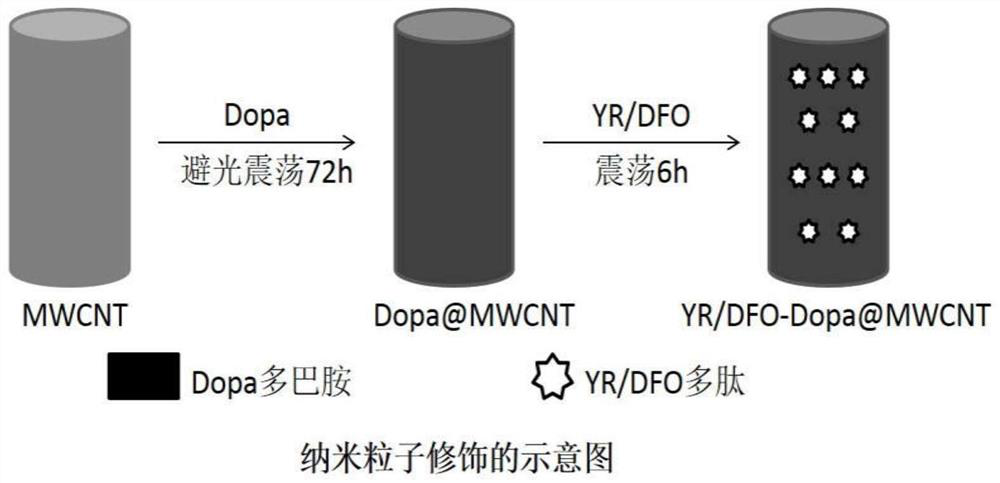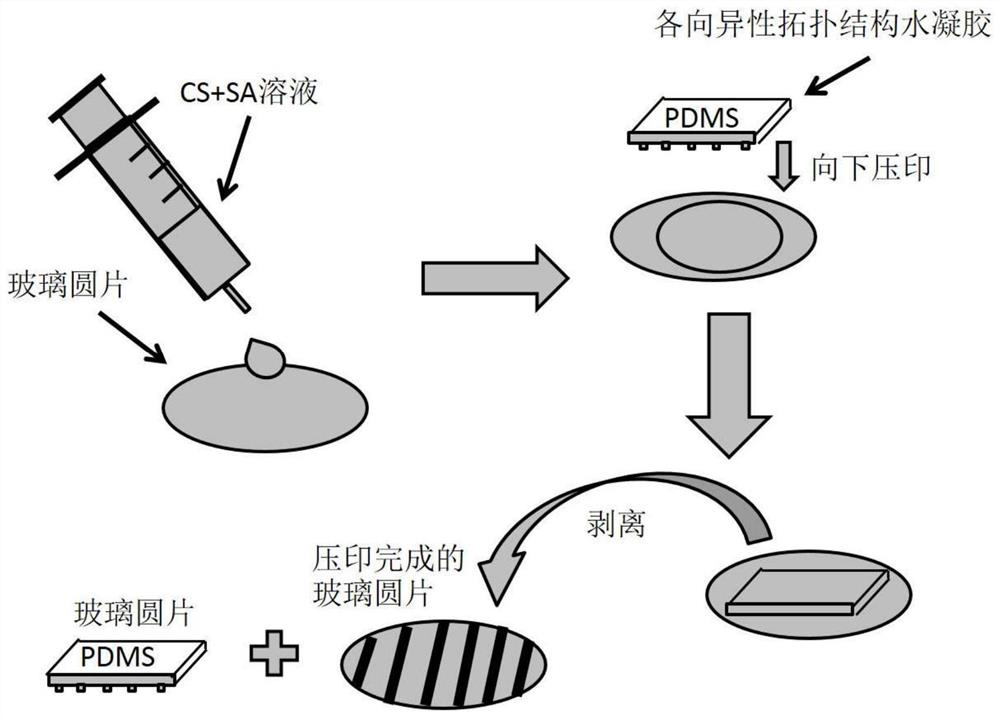Preparation method of biomimetic tissue engineering scaffold with photothermal responsiveness and controlled drug release
A tissue engineering scaffold and a responsive technology, applied in the field of bionic tissue engineering scaffold preparation, can solve problems such as accelerated nerve regeneration, achieve the effect of improving the success rate, realizing personalized treatment and application, and facilitating long-term treatment and rehabilitation
- Summary
- Abstract
- Description
- Claims
- Application Information
AI Technical Summary
Problems solved by technology
Method used
Image
Examples
specific Embodiment 1
[0061] The first step is to prepare a nanoparticle with photothermal effect loaded with bioactive molecules:
[0062] Take tris-tris to prepare a Tris solution with a pH of 8.5, then add Dopa powder to the Tris solution to prepare a polydopamine solution, and finally add 50 mg of nanoparticles to 10 ml of the polydopamine solution. Wrap the container containing the mixed solution with tin foil to avoid light, ventilate it, and shake it in a mechanical shaker. After shaking, remove the solution from the shaker container, discard the supernatant, take out the precipitate and dry it. Then dry the obtained powder and wash it again with Milli-Q. After centrifuging again, the supernatant was discarded, and the precipitate was dried to obtain Dopa@MWCNT powder. Add Dopa@MWCNT powder into 20ml of DFO / YR mixed solution, and shake it in a mechanical shaker. After shaking, the solution was taken out from the shaker and placed in a centrifuge for centrifugation. Finally, discard the s...
specific Embodiment 2
[0070] The first step is to prepare a nanoparticle with photothermal effect loaded with bioactive molecules:
[0071] Take tris-tris to prepare a Tris solution with a pH of 8.5, then add Dopa powder to the Tris solution to prepare a polydopamine solution, and finally add 100 mg of nanoparticles to 10 ml of the polydopamine solution. Wrap the container containing the mixed solution with tin foil to avoid light, ventilate it, and shake it in a mechanical shaker. After shaking, remove the solution from the shaker container, discard the supernatant, take out the precipitate and dry it. Then dry the obtained powder and wash it again with Milli-Q. After centrifuging again, the supernatant was discarded, and the precipitate was dried to obtain Dopa@MWCNT powder. Add Dopa@MWCNT powder into 20ml of DFO / YR mixed solution, and shake it in a mechanical shaker. After shaking, the solution was taken out from the shaker and placed in a centrifuge for centrifugation. Finally, discard the ...
specific Embodiment 3
[0079] The first step is to prepare a nanoparticle with photothermal effect loaded with bioactive molecules:
[0080] Take tris-tris to prepare a Tris solution with a pH of 8.5, then add Dopa powder to the Tris solution to prepare a polydopamine solution, and finally add 150 mg of nanoparticles to 10 ml of the polydopamine solution. Wrap the container containing the mixed solution with tin foil to avoid light, ventilate it, and shake it in a mechanical shaker. After shaking, remove the solution from the shaker container, discard the supernatant, take out the precipitate and dry it. Then dry the obtained powder and wash it again with Milli-Q. After centrifuging again, the supernatant was discarded, and the precipitate was dried to obtain Dopa@MWCNT powder. Add Dopa@MWCNT powder into 20ml of DFO / YR mixed solution, and shake it in a mechanical shaker. After shaking, the solution was taken out from the shaker and placed in a centrifuge for centrifugation. Finally, discard the ...
PUM
 Login to View More
Login to View More Abstract
Description
Claims
Application Information
 Login to View More
Login to View More - R&D
- Intellectual Property
- Life Sciences
- Materials
- Tech Scout
- Unparalleled Data Quality
- Higher Quality Content
- 60% Fewer Hallucinations
Browse by: Latest US Patents, China's latest patents, Technical Efficacy Thesaurus, Application Domain, Technology Topic, Popular Technical Reports.
© 2025 PatSnap. All rights reserved.Legal|Privacy policy|Modern Slavery Act Transparency Statement|Sitemap|About US| Contact US: help@patsnap.com



